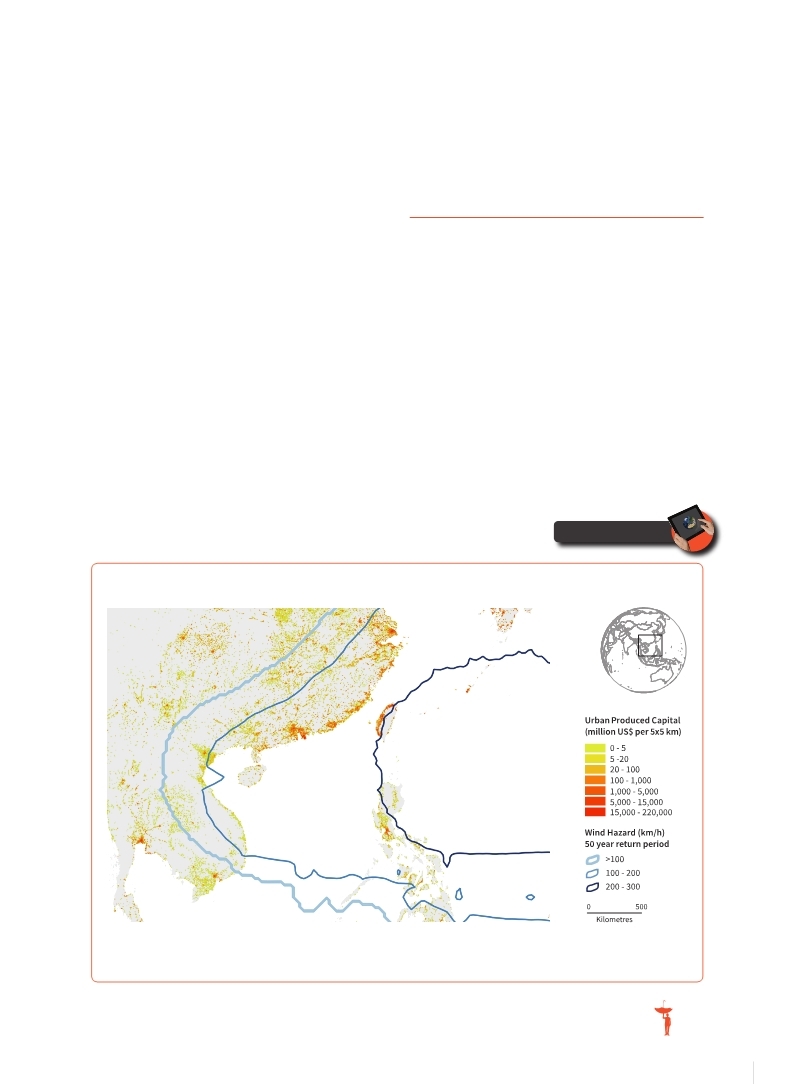 |
Global Assessment Report on Disaster Risk Reduction 2013
From Shared Risk to Shared Value: the Business Case for Disaster Risk Reduction |
 |
Global Assessment Report on Disaster Risk Reduction 2013
From Shared Risk to Shared Value: the Business Case for Disaster Risk Reduction |
|
|


|

45
(Source: GAR global risk model)
Figure 2.3 Produced capital stock in Southeast Asia and cyclone wind hazard (50 years return period)
which are not necessarily factored into business investment decisions.
Between 1970 and 2010, for example, while global population growth was 87 percent, populations living in flood plains grew by 114 percent and in cyclone-prone coastlines by 192 percent. Similarly, the proportion of global GDP exposed to tropical cyclones increased from 3.6 percent to 4.3 percent over the same period. Most of this increase occurred in Asia (UNISDR, 2011
UNISDR. 2011.,Global Assessment Report on Disaster Risk Reduction: Revealing Risk, Redefining Development., United Nations International Strategy for Disaster Reduction., Geneva,Switzerland: UNISDR.. . This growth in exposure is one of the principal drivers of increasing disaster risk. Simply put, the concentration of individuals and produced capital in
hazard-exposed areas today is greater by an order of magnitude than it was 40 years ago.
2.3
Reducing mortality risk and
increasing economic risk
Exposure is a key driver, but vulnerability levels still strongly shape the different levels of disaster risk that can be found between and within countries. Several countries have been successful in significantly reducing mortality risk. But many countries have struggled to reduce economic risks—particularly those with limited capacities for managing development process and investments.
Disaster risk not only depends on the severity of hazard or volume of population or assets exposed, it also is a function of the susceptibility of people
Cyclonic winds
|



 |
